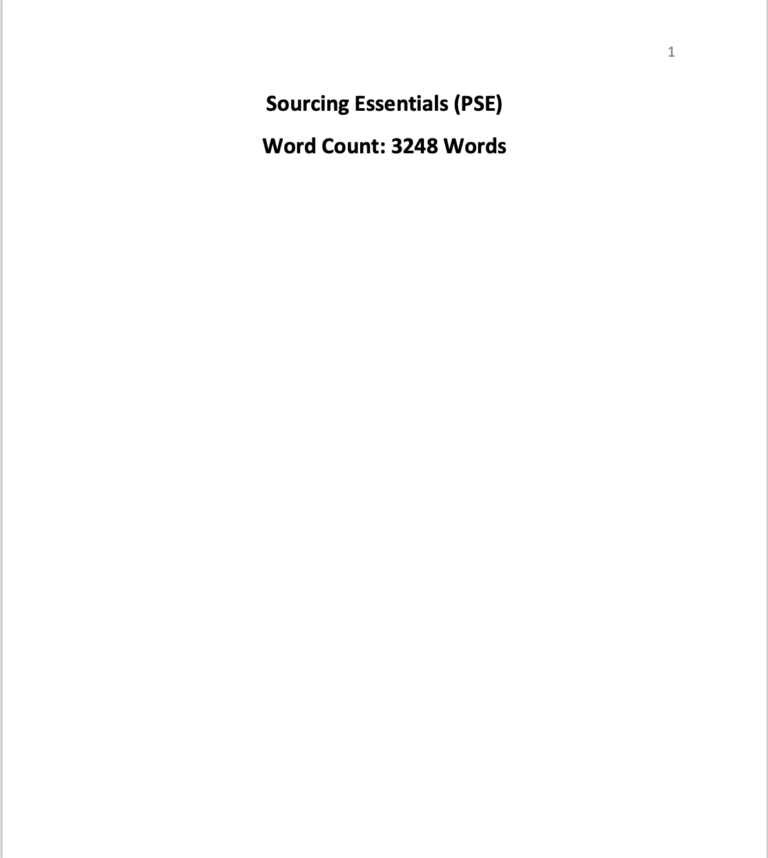(Solution) 7C002 Question 1: Wellbeing Strategies benefit Stakeholders within an organisation
CIPD Level 7
7C002- People Management & Development Strategies for Performance

New User Gifts
First Order Deal get Ksh 200 Off.
£ 20.00 Original price was: £ 20.00.£ 10.00Current price is: £ 10.00.
Payment Methods:
Description
Solution
Promotion and support of staff wellbeing is at the core/heart of organisations championing better work and working lives. According to CIPD (2023), an effective wellbeing strategies has a positive implication in delivering mutual-based benefits for people, organisations, economies and communities. The wellbeing strategies means creation of an environment which holistically promote state of contentment benefitting different stakeholders within organisations. To achieve this, CIPD (2023) note that the people practice professionals ought to initiate a holistic framework for supporting employees physical health and safety, mental health and offering sources of help including counselling, employees assistance programs (EAP) and Occupational Health Services based on possibility.
In order to explain how promotion of wellbeing strategies can benefit all stakeholders within an organisation, the business case of Riyad Bank can be put into account. As evidenced in Riyad Bank (2024) the organisation is the leader in community development with a set of consistent input on achievement of sustainable developments. To success in the analysis, Mendelow Matrix tool can be appropriately used.
Figure 1: Categories in the Mendelow Matrix for Stakeholders Analysis
In category A in the figure 1 Mendelow Matrix, this include the customers of Riyad Bank and other end-users of their financial planning, cash management, trade finance, investment banking and brokerage services. In Shinwell and Shamir (2018) report which measures impacts of business on wellbeing and sustainability, appropriate link was generated. The report hypothesised that in organisations creating appropriate wellbeing in organisations impact on customer satisfaction levels. Similarly, for Riyad Bank, by investing in wellbeing strategies, employees would benefit from improved clients retention, positive word-of-mouth and eventually increasing organisation success. These findings are supported by Haverila et al. (2020) evaluating customer satisfaction with provided products and services using Servqual Model. The tangibles, reliability, responsiveness, assurance and empathy map are all appropriate predictors of services quality. Further, Astashkina et al. (2018) noted that investing in flexible working strategy as an approach of improving the wellbeing increases customers satisfaction with 75% with the customer lifetime revenues increased with 35%. Hence, by investing in strategies such as flexible working, employees assistance programs, Riyad bank would successfully gain in increased customer satisfaction.
For Category B of stakeholders, this include the employees and people professional department in Riyad Bank. These stakeholders are identified as having high level of interest and low level of power. While identifying employees wellbeing as a holistic approach, CIPD (2023) identify the best practice as informed by unique needs and characteristics of employees and organisation. The report found that appropriate wellbeing initiatives positively increase resilience, improved engagement, less sickness absenteeism and increased performance and productivity. In a specific context, Richemond and Needham (2020) hypothesised that in organisations implementing wellness initiatives, they gain from 67% increased staff satisfaction, 63% increased in financial stability and growth and 50% reduced staff absenteeism. Similarly, for Riyad Bank, Post COVID-19, they have been faced with an increased absenteeism and employees turnover. By investing in wellbeing strategies, unexplained absenteeism would be mitigated, stress leave mitigated and reduced turnover.
Considering Category C,
Please click the following icon to access this assessment in full
Related Papers
(Solution) CIPS ADNOC APGCM tools & techniques that can be applied to map categories of direct & indirect expenditure
(Solution) New Assessment ID/CIPD_3CO03_24_01 Core behaviours for people professionals
(Solution) 5C003 When and how to raise concerns
(Solution) University of Northampton AS2- Replication of CCS Projects Managing Operations and the Supply Chain
(Solution) Principles of Marketing Marketing Information and Research
(Solution) CIPS Sourcing Essentials Assessment
- In this assessment, sourcing approaches have been identified and holistically reviewed. This is in line with RCU organisation IT spend category. This is further compared with payment services, document management category which is office suppliers and postal services.
- For evaluating the identified spend categories, various tools have been selected which are Kraljic Analysis Tool, Mendelow’s Analysis Tool for Stakeholder analysis and the Maslow Hierarchy of needs.
- Further, by using the SWOT analysis, the internal and external factors of the sourcing have been selected. A further analysis by use of Peter Block Grid’s has been applied to evaluate the interests of stakeholders to source appropriate position.
- The findings indicate that RCU adopts the best sourcing approach based on their needs.
- Finally, by using Carter’s 10Cs model, the best practice for pursuing suppliers appraisal has been provided for IT spend category.


